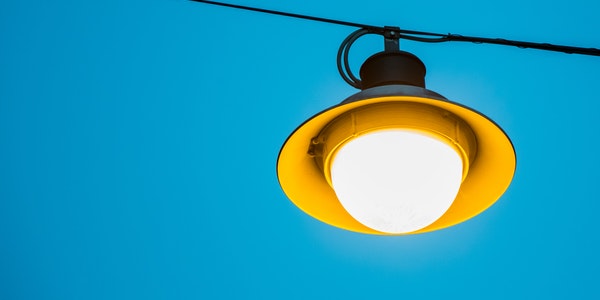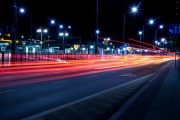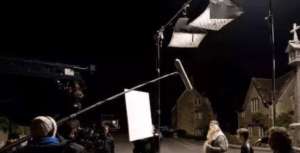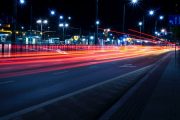What is the difference between warm white, cool white and neutral white
(1) Different color temperature
Cool White: color temperature above 7000K, warm White: 2700K color temperature, neutral White 6000K color temperature.
Visual effect: neutral white is equivalent to the color of noon sunlight, warm white is equivalent to the color of street lights at night, slightly yellow, giving a relatively dark feeling, but warm.
(2) Different brightness
The cool white light source is close to natural light and has a bright feeling, which makes people concentrate; the warm color light is similar to the incandescent light, and the red light component is more, giving people a warm, healthy and comfortable feeling; the positive white light source is close to natural light and makes people energy concentrated.
(3) The scope of application is different
Cool white is suitable for offices, meeting rooms, classrooms, drawing rooms, design rooms, library reading rooms, exhibition windows and other places. Warm White is suitable for homes, residences, dormitories, hospitals, hotels and other places, or places where the temperature is relatively low. True white is suitable for the office.
Warm white light
Warm white light, also known as GDE, is a light color of LED street lights. It has the characteristics of environmental protection, no pollution, low power consumption, high light efficiency, and long life.
Regarding road lighting, there has always been a dispute between the “Yellow Light School” and the “White Light School”. The representative of the “Yellow Light School” is the high-pressure sodium lamp, which has become the mainstream of street lamps in various countries in the past 30 to 40 years because of its economy and energy saving and good fog permeability.
Poor color reproduction is an inherent disadvantage of yellow light. The early representative of the “white light school” is the quartz metal halide lamp, which has more than three times higher color performance than yellow light, but it has not been applied on a large scale due to insurmountable technical problems.
“White light school” is likely to have a new representative-warm white light. Warm white light is close to the performance effect of sunlight, which can give passers-by a warm feeling. Also because of better visibility, it is easier to distinguish the color characteristics of the road and the surrounding environment under warm white light, ensuring the safety and comfort of road driving.
The core advantage of warm white light is that it has higher lighting efficiency and consumes less power. The same street light can save at least 10% of electricity and reduce carbon dioxide emissions by 40% compared to yellow light. Therefore, it meets the requirements of environmentally friendly lighting and green lighting.
The concept of warm white light was first proposed by Philips, and has been widely used in the United States, the United Kingdom, Belgium, Norway and other countries.
The formation of LED white light
The new development in recent years is to coat blue LEDs with phosphors to convert blue LEDs into white LED products. This operation generally requires an LED Driver or Power Supply. The main function of the driver circuit or power supply is to convert AC voltage to DC power and complete the voltage and current that are compatible with the LED. , To drive the matched components.
The bulbs of LED lamps are small in size, light in weight, and encapsulated in epoxy resin, which can withstand high-strength mechanical shocks and vibrations, are not easily broken, and have a long brightness decay cycle, so their service life can be as long as 50,000-100,000 hours, far exceeding the traditional 1,000 hours for tungsten bulbs and 10,000 hours for fluorescent tubes.
Since the useful life of LED lamps can reach 5 to 10 years, it can not only greatly reduce the cost of lamp replacement, but also because of its characteristics that it can drive light with a very small current. Under the same lighting effect, the power consumption is only One-half of the fluorescent tube, so LED also has the advantages of power saving and energy saving at the same time.
However, because some of the LED technology is still insufficient, the disadvantages of the initial use of the lamps include poor light quality (color rendering, consistency, color temperature), difficult heat dissipation, and high price. In addition, improper heat dissipation will cause As a result, the brightness of LED lamps and the service life of circuit components accelerate and decay.
Commercial use of white LED lights
With the development of social economy and the improvement of people’s living standards, people have higher and higher requirements for commercial space. Lighting is one of the important parts of the store space, and the lighting design can attract and guide the eyes of consumers.
Through the shaping of the space light environment, an fascinating display space and display image are created, and a variety of lighting methods are used to display the theme image of the store, which makes people associate, arouse the resonance of consumers, and establish an emotional exchange with consumers.
- Food store
Food stores are divided into counter-type and cabinet-type sales models by the difference in food placement, and different models use different lighting methods. Because the food itself is small in size and rich in colors, the intensity and color rendering requirements of its lighting are relatively high. A food store generally consists of a sub-counter sales area, a cashier area and a passage area.
Recommended product configuration: counter sales area, closet sales area, cashier area and channel area.
- Dessert shop
Dessert shops mainly deal with bread and cakes. The display requires high color rendering, emphasizing factors such as bright color and freshness, and has high requirements for lighting. In addition to satisfying the key factors of the above display, it is also necessary to create a comfortable shopping environment. At the same time, for the dining area derived from the dessert shop, the lighting should consider both the functionality and the creation of a dining and leisure atmosphere.
Recommended product configuration: display area, cashier area, passage area and dining area.
- Communication store
The terminal model of the communication industry is divided into two categories: one is a hypermarket and the other is a specialty store, which is sold in the form of a counter. Functionally, it is divided into: channel area, counter and sales area.
A single brand not only has sales functions, but also carries brand promotion and service functions. It can be divided into sales area, entrance image area, experience area and after-sales service area.
Outdoor applications of white LED lights
- Building exterior lighting
Projecting a certain area of the building is nothing more than the use of round and square-shaped projection lamps that control the beam angle, which is completely consistent with the concept of traditional projection lamps. However, due to the small and thin LED light source, the development of linear projection lamps has undoubtedly become a highlight of LED projection lamps, because many buildings simply do not have a place to place traditional projection lamps. It is easy to install, can be installed horizontally or vertically, and better integrates with the building surface, bringing a new lighting vocabulary to lighting designers and expanding the creative space. And it will have an impact on the lighting techniques of modern buildings and historical buildings.
- Landscape lighting
Since LEDs are not mostly glass bulbs like traditional lamps, they can be organically combined with urban street furniture. It can be used for lighting in urban leisure spaces such as paths, stairs, decks, waterfronts, and gardening. For flowers or low shrubs, LEDs can be used as a light source for illumination. LED concealed floodlights will be particularly favored. The fixed end can be designed as a plug-in type, which can be adjusted according to the height of plant growth.
- Signs and indicative lighting
Places that require space limitation and guidance, such as the separation display of roads and pavements, the local lighting of stair steps, and the indicating lighting of emergency exits. You can use LED self-luminous buried lamps with appropriate surface brightness or lamps embedded in vertical walls, such as The ground guide lights in the auditorium of theaters or the indicator lights on the side of the seats, and the guide lights on the floors in the shopping center. In addition, compared with neon lights, LEDs are low-voltage and have no fragile glass, and will not increase costs due to bending during production. It is worth promoting and using in logo design.
Indoor applications of white LED lights
- Indoor space display lighting
As far as lighting quality is concerned, since the LED light source has no heat, ultraviolet and infrared radiation, it will not cause damage to exhibits or commodities. Compared with the traditional light source, the lamp does not need additional filter device, the lighting system is simple, the cost is low, and it is easy to install. Its precise lighting can be used as a substitute for optical fiber lighting in museums. Commercial lighting uses colored LEDs in metropolises, and interior decorative white LEDs combined with interior decoration provide auxiliary lighting for the interior. LEDs can be used for hidden light bands, which is particularly advantageous for low spaces.
- Entertainment venues and stage lighting
Due to the dynamic and digital control of color, brightness and dimming of LEDs, lively saturated colors can create static and dynamic lighting effects. From white light to any color in the full spectrum, the use of LEDs opens up new ideas in the lighting of such spaces. The maintenance value of long life and high lumens (90% luminous flux is still maintained after 10,000 hours). Compared with the 50-250 hour lifespan of PAR lamps and metal halide lamps, the maintenance cost and the frequency of light source replacement are reduced. In addition, the LED overcomes the phenomenon of color shift after the metal halide lamp is used for a period of time. Compared with PAR lights, there is no heat radiation, which can make the space more comfortable. The application of LED color decorative walls in restaurant buildings has become a common practice.
- Video screen
The full-color LED display is the most eye-catching outdoor large-scale display device in the world today. It adopts advanced digital video processing technology and has an unparalleled super large area and super high brightness. In addition, the LED lights installed on the screen can also adopt various specifications of light-emitting pixels according to different indoor and outdoor environments to achieve different brightness, color, and resolution to meet various purposes.
It can dynamically display graphics, text and animation information, and use multimedia technology to play various multimedia files. The most influential LED display in the world is undoubtedly the New York Stock Exchange in Times Square, Manhattan, using a total of 18,677,760 LED beads with an area of 10,736 square feet. The screen can be divided into multiple screens and displayed at the same time, presenting the market quotations of the Wall Street stock market to the public at a glance. In addition, the Aurora International Headquarters, which rises in the Lujiazui Financial Center in Pudong, Shanghai, has a 100m-long ultra-large LED screen on the entire facade of the building facing Puxi, with a total area of 3,600 square meters. Called the number one in the world.





